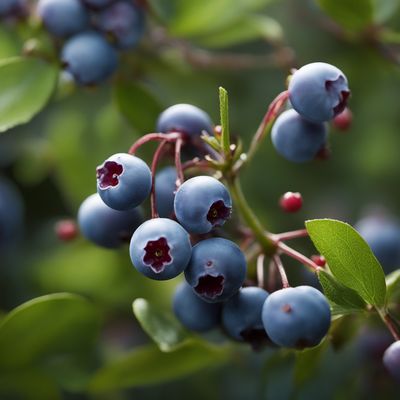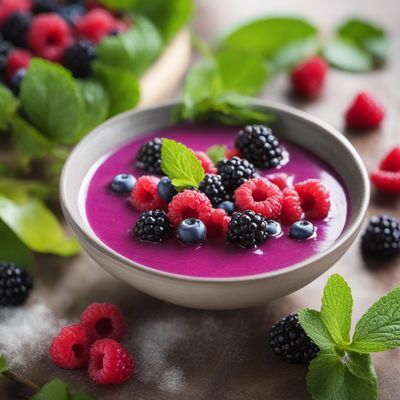
Ingredient
Bilberries (generic)
The Secret Superfood: Unveiling the Power of Bilberries
Bilberries are small, dark blue berries that resemble blueberries but are slightly smaller in size. They have a rich, deep purple flesh and a sweet-tart flavor. The texture of bilberries is delicate and juicy, with a thin skin that bursts with flavor when bitten into. These berries are known for their vibrant color and are often used in various culinary creations, from jams and pies to smoothies and desserts.
Origins and history
Bilberries are native to Europe and have a long history of traditional use in Scandinavian and British cuisines. They have been foraged for centuries and were highly valued for their medicinal properties. Bilberries were believed to improve vision and were used to treat various ailments, including diarrhea and inflammation. Today, they are cultivated in many countries, including Finland, Sweden, and the United Kingdom.
Nutritional information
Bilberries are packed with antioxidants, vitamins, and minerals. They are a rich source of vitamin C, vitamin K, and manganese. Additionally, they contain anthocyanins, which are powerful antioxidants that contribute to their deep blue color and provide numerous health benefits.
Allergens
Bilberries are generally considered safe and are not known to cause allergies. However, individuals with a known allergy to berries should exercise caution.
How to select
When selecting bilberries, look for berries that are plump, firm, and have a deep blue color. Avoid berries that are soft, moldy, or have any signs of damage. Fresh bilberries should have a sweet aroma.
Storage recommendations
To maintain the freshness of bilberries, store them in the refrigerator in a breathable container or a paper bag. They can be kept for up to a week. For longer storage, freeze the berries in a single layer on a baking sheet and then transfer them to a freezer-safe bag or container.
How to produce
Bilberries can be challenging to grow for amateurs as they require specific soil conditions and a cool climate. However, if you have the right conditions, you can try growing them in acidic soil with good drainage and partial shade.
Preparation tips
Before using bilberries, rinse them gently under cold water and remove any stems or leaves. They can be enjoyed fresh as a snack, added to smoothies, used in baked goods, or cooked down into a delicious sauce or compote. Bilberries are also a popular choice for making jams and jellies due to their natural pectin content.
Substitutions
Blueberries can be used as a substitute for bilberries in most recipes, as they share a similar flavor profile and texture.
Culinary uses
Bilberries are commonly used in desserts such as pies, tarts, and crumbles. They can also be incorporated into pancakes, muffins, and scones for a burst of flavor. Additionally, bilberries can be used to make sauces, syrups, and even infused into spirits for unique cocktails.
Availability
Bilberries are commonly found in Europe, particularly in Nordic countries such as Finland, Sweden, and Norway. They are also cultivated in the United Kingdom and can be found in some specialty stores or farmers markets in other regions.


